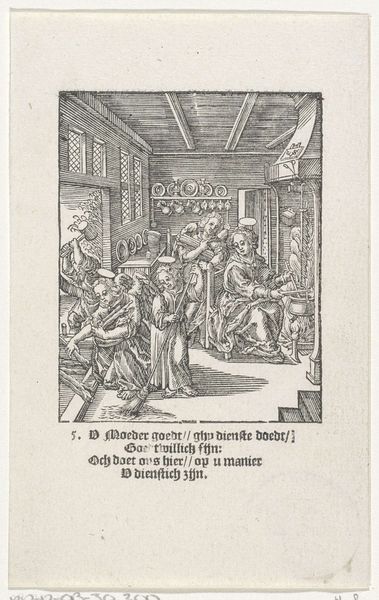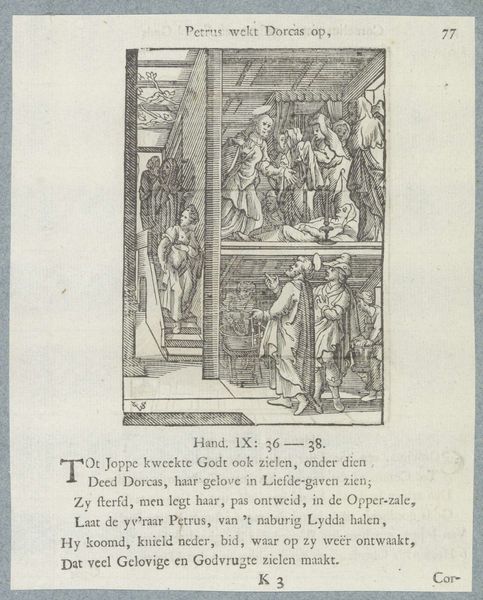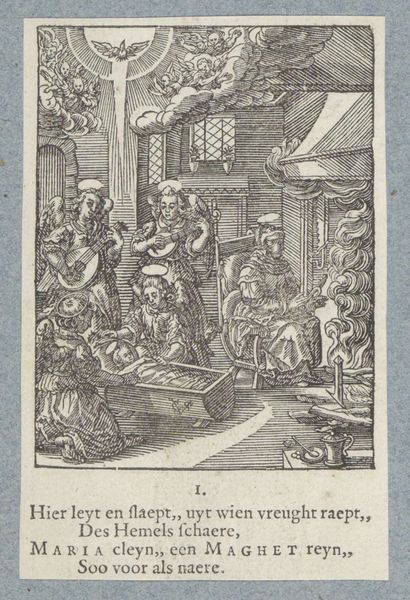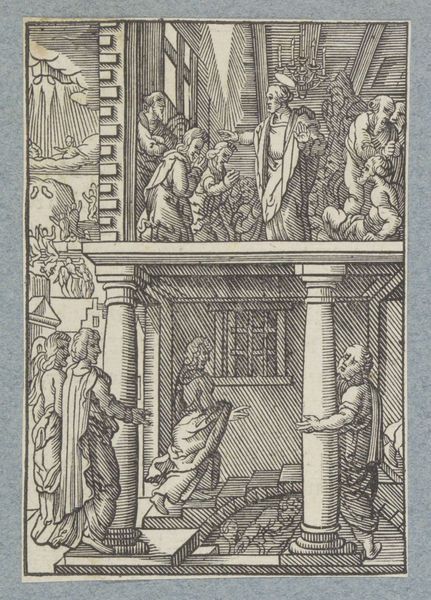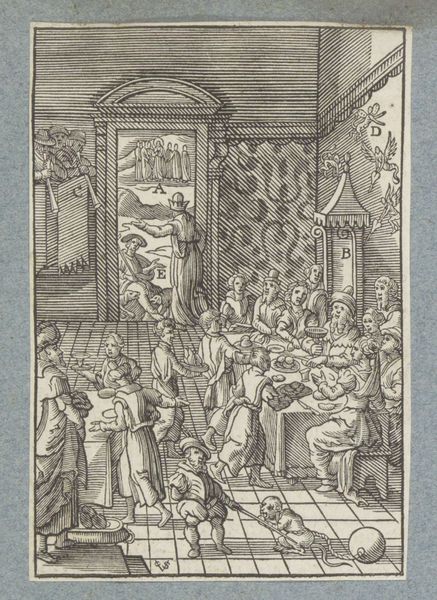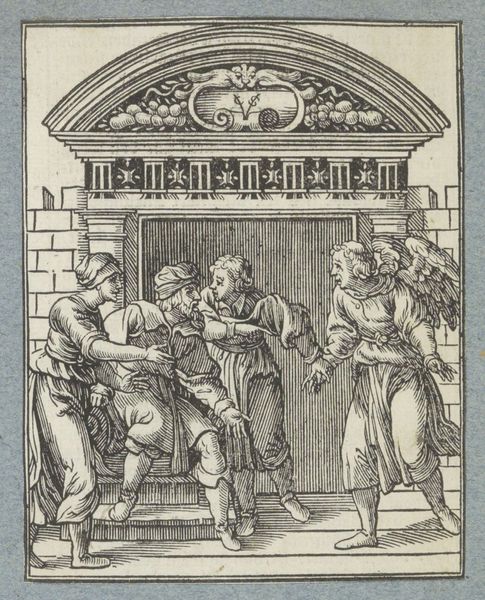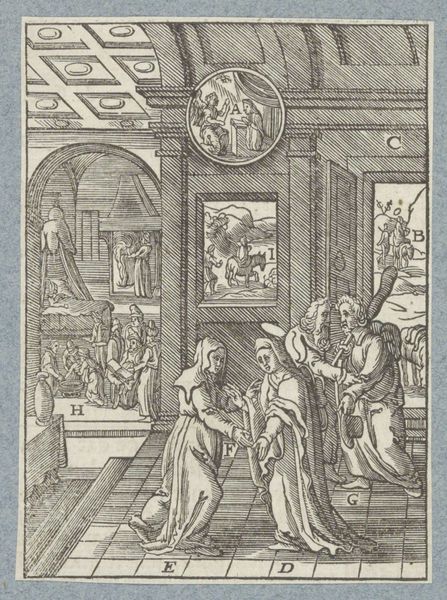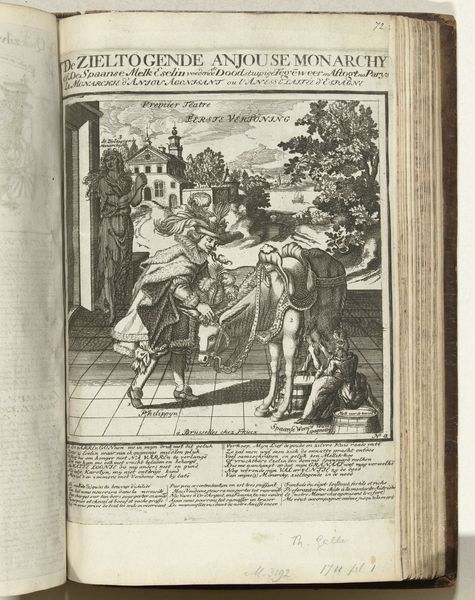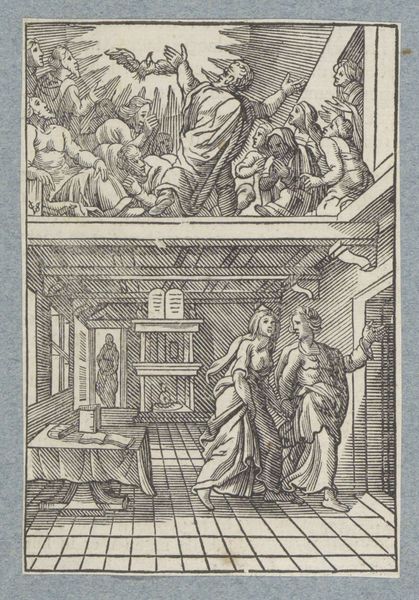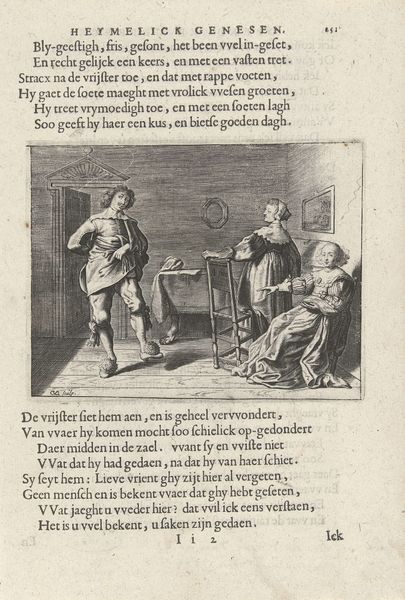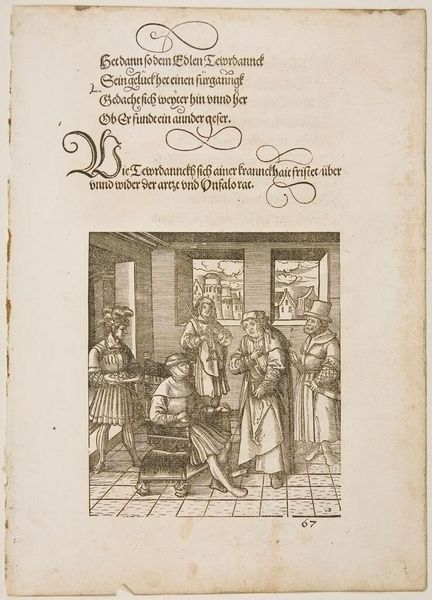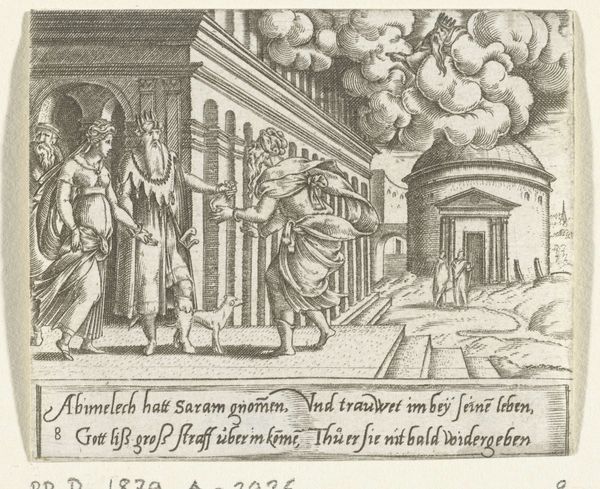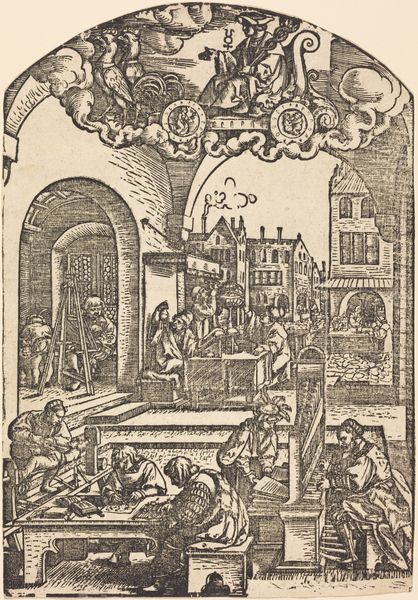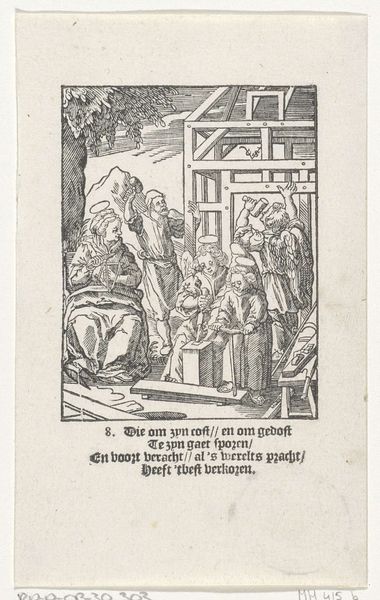
print, engraving
#
narrative-art
# print
#
figuration
#
line
#
genre-painting
#
northern-renaissance
#
engraving
Dimensions: height 80 mm, width 62 mm, height 99 mm, width 80 mm
Copyright: Rijks Museum: Open Domain
Editor: So, this is "Christuskind veegt de vloer" from 1617, made by Christoffel van Sichem II. It’s an engraving showing Christ as a child doing housework, with other figures in the background also engaged in labor. I find it interesting how...ordinary it seems. What’s your perspective? Curator: The deliberate choice of depicting Christ as engaged in the everyday labour challenges typical, idealized depictions. This print participates in a discourse on the material realities of religious figures. Consider the labour involved in its creation; the artist physically cuts away material to create a reproducible image. Editor: That's interesting. So it's not just *depicting* labour, but itself is a product of labour? What would that have meant in the 17th century? Curator: Exactly. It prompts questions about art as a commodity, labour's inherent value, and religious iconography. In the Northern Renaissance, where burgeoning mercantile culture met religious devotion, this sort of image would highlight piety connected to the virtues of hard work and domesticity. Editor: I see. The text below speaks of being a good mother, a willing servant. So, domestic work and religious devotion were being equated here? Curator: Precisely. Furthermore, consider the engraving's availability: its reproducibility made religious imagery more accessible, impacting faith's democratization. Who consumed these images? How did the mass production influence devotional practices? Editor: So it makes you consider the image's function in the world – as a tool to further some social function – rather than simply how beautiful it is, or what it means? Curator: Yes. This engraving becomes not only an aesthetic object, but a material artifact inseparable from economic and cultural structures. I believe approaching art in this way illuminates new dimensions for investigation. Editor: That’s fascinating. I’ll definitely look at art through a new lens from now on. Thank you!
Comments
No comments
Be the first to comment and join the conversation on the ultimate creative platform.
